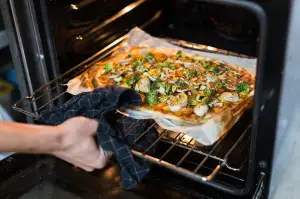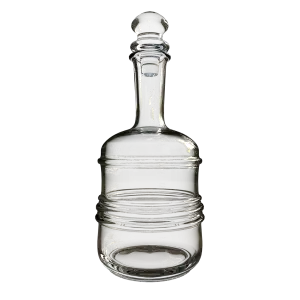Master the Art of Cleaning a Cast Iron Skillet: Essential Tips for a Spotless Kitchen Companion

- Gather materials: coarse salt, sponge, dish soap, paper towels, and vegetable oil.
- Rinse skillet with hot water, avoiding soap.
- Scrub off food residue with coarse salt and sponge.
- Rinse skillet and dry thoroughly with paper towels.
- Apply a thin layer of vegetable oil to skillet.
- Place skillet in oven at 350°F for an hour to season it.
- Let skillet cool before storing it.
Gather materials: coarse salt, sponge, dish soap, paper towels, and vegetable oil.
Before diving into the process of cleaning a cast iron skillet, it's essential to gather all the necessary materials. You will need coarse salt to help scrub off any food residue, a sponge for gentle cleaning, dish soap for optional use (though many prefer to avoid it), paper towels for drying, and vegetable oil for seasoning the skillet after cleaning. Having these items on hand will ensure that your cast iron skillet remains a reliable kitchen companion for years to come.
Rinse skillet with hot water, avoiding soap.
After cooking with your cast iron skillet, it's important to clean it properly to maintain its seasoning. Start by rinsing the skillet with hot water while it's still warm. Avoid using soap as it can strip away the skillet's seasoned layer. The hot water will help loosen any food particles stuck to the surface, making them easier to remove. Use a sponge or brush to gently scrub off any remaining residue, being careful not to scratch the skillet. This step is crucial in preserving the non-stick properties of your cast iron cookware.
Scrub off food residue with coarse salt and sponge.
To effectively clean a cast iron skillet, start by scrubbing off any food residue with coarse salt and a sponge. The coarse salt acts as a gentle abrasive that helps to lift off stuck-on bits without damaging the skillet's seasoning. Simply sprinkle a generous amount of coarse salt onto the surface of the skillet and use a damp sponge to scrub in circular motions. This method is more gentle than using harsh chemicals or metal scouring pads, which can strip away the skillet's seasoning and lead to rusting over time.
Rinse skillet and dry thoroughly with paper towels.
After scrubbing off any food residue with the coarse salt and sponge, it's time to rinse the skillet under hot water. Be sure to avoid using soap, as this can strip away the skillet's seasoning. Once rinsed, dry the skillet thoroughly with paper towels to prevent any rusting. Make sure to remove all moisture from the surface and edges of the skillet before moving on to the next step in maintaining your cast iron cookware.
Apply a thin layer of vegetable oil to skillet.
After thoroughly drying the cast iron skillet with paper towels, it's time to apply a thin layer of vegetable oil to prevent rust and maintain its non-stick surface. Using a paper towel or cloth, pour a small amount of vegetable oil onto the skillet and spread it evenly across the entire surface, including the handle and outer edges. Make sure to coat both the inside and outside of the skillet with a thin layer of oil. This process helps to create a protective barrier that prevents moisture from penetrating the cast iron and causing rust.
Place skillet in oven at 350°F for an hour to season it.
Once you have thoroughly dried the skillet, it's time to season it. Preheat your oven to 350°F. Place the clean and dry skillet in the oven for an hour. This process helps create a protective layer on the cast iron, preventing rust and enhancing its non-stick properties. Seasoning also adds flavor to your dishes cooked in the skillet. After an hour, turn off the oven and let the skillet cool completely before storing it. Mastering this technique will ensure your cast iron skillet remains a reliable kitchen companion for years to come.
Let skillet cool before storing it.
Once the skillet has been seasoned in the oven at 350°F for an hour, it's crucial to allow it to cool completely before storing it. This step is essential to ensure that the seasoning process sets properly and helps prevent any potential damage to the skillet. Rushing this cooling process may lead to uneven seasoning or even warping of the cast iron. Therefore, patience is key when mastering the art of cleaning and maintaining a cast iron skillet. So, resist the temptation to rush and let your skillet cool naturally before tucking it away in your kitchen cabinet.
Published: 04. 05. 2024
Category: Home



